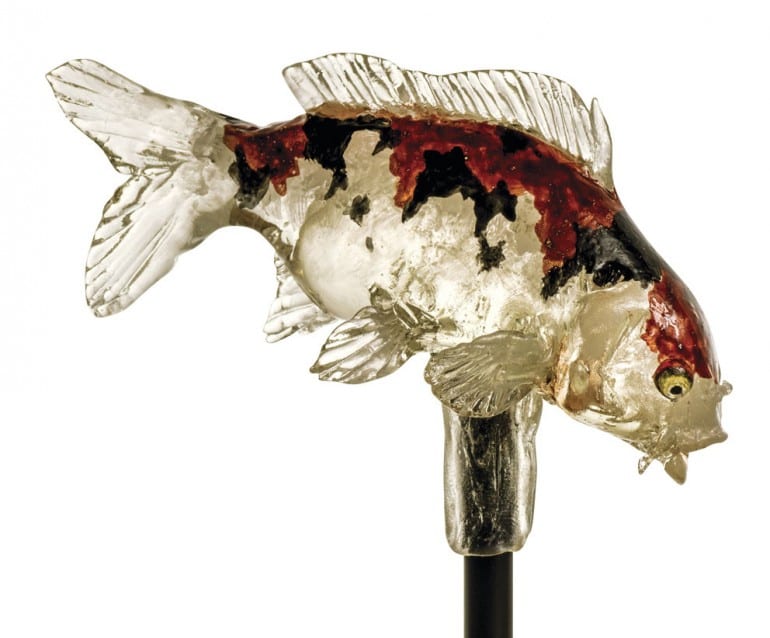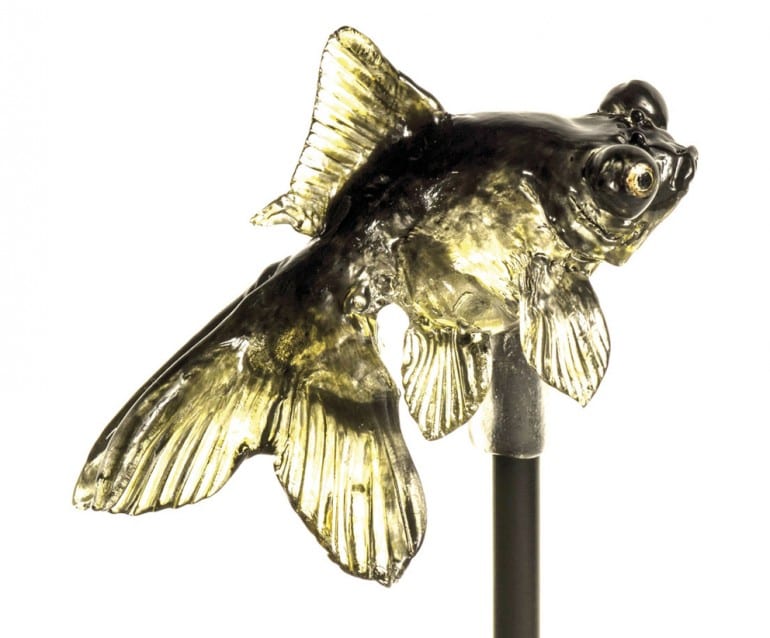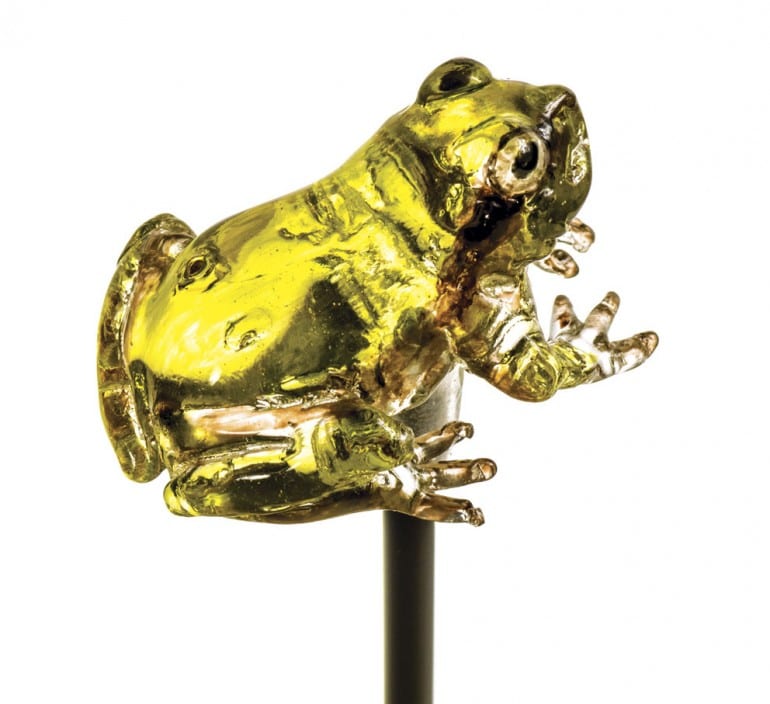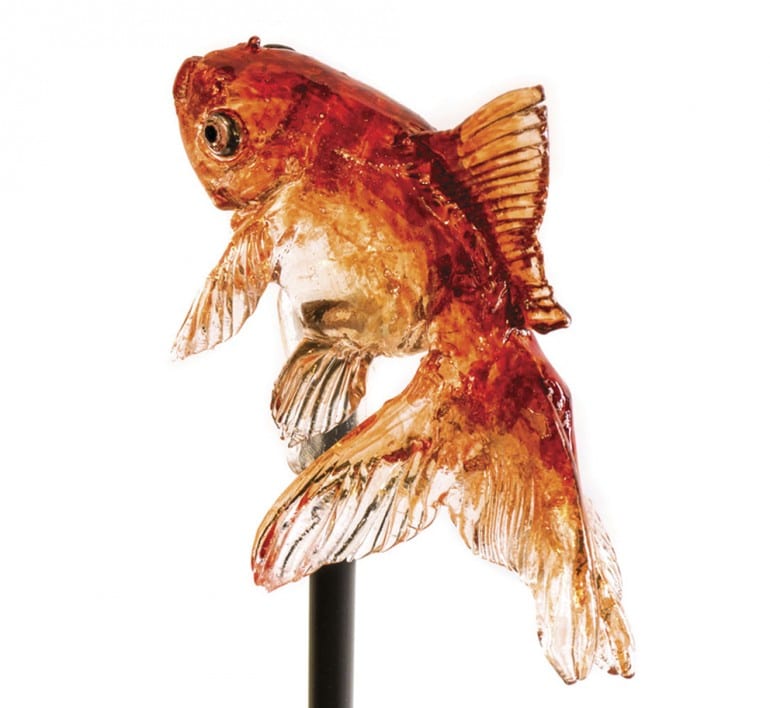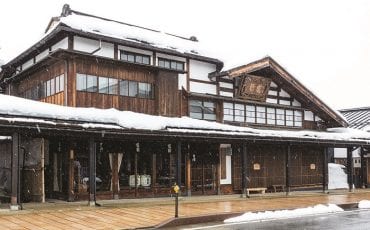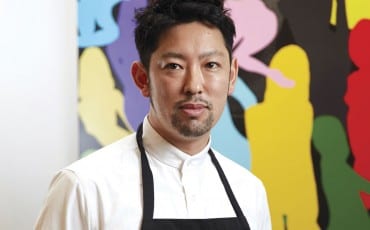- OISHII
- Articles
- Art & Culture
- Japanese Beautiful Candy -Amezaiku-
Articles
Art & Culture
Apr 28, 2016
Japanese Beautiful Candy -Amezaiku-
The intricate candy craft from Ameshin is made using only a pair of scissors and bare hands. Shinri Tezuka, a self-taught amezaiku craftsman, tells us why he decided to pick up this rare Japanese art form.
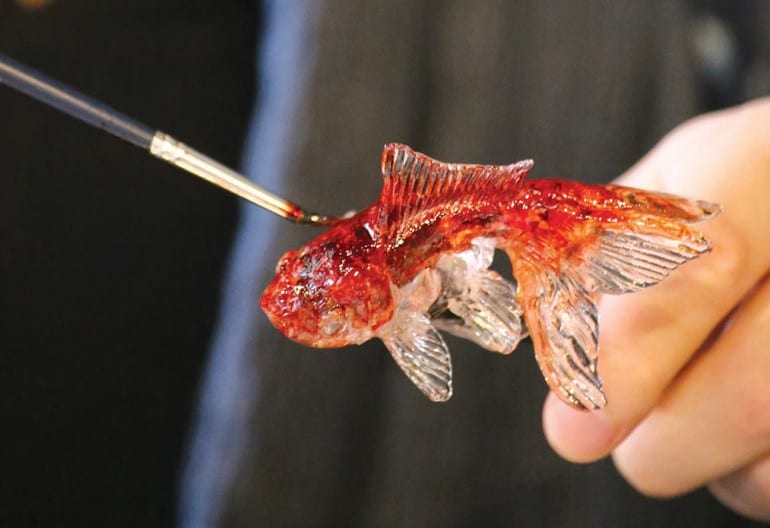
Amezaiku is a type of traditional craft using candy as a medium. While there hasn’t been much written on the subject, amezaiku is believed to have been around since the 8th century. It was especially popular during the Edo period (1603-1868), where craftsmen peddled amezaiku on the street. Amezaiku is made by first softening candy by heating it to 90°c. No sculpting tools are used — only a pair of traditional Japanese scissors, and bare hands to cut, pull and bend around the candy while it’s attached to the end of a stick. The piece must be completed before the candy cools and hardens.
I had many artistic pursuits as a child and though I had come across amezaiku, I never expected to make a living from it. In fact, my first job after graduating from technical college involved working with fireworks. Although I enjoyed what I did, what I really wanted was to have more artistic and creative control over my work.
When I left my job as a fireworks craftsman, I didn’t quite know what I wanted to do. Then, out of the blue, I started recalling my encounters with amezaiku as a child, and started doing more research into it. It was something I knew that I could develop the talent and skills for, and that was when I started to give serious thought to creating amezaiku for a living.
A Self-Taught Artist
As there wasn’t really anyone I could learn the art of amezaiku from, I holed myself up at home for six months straight perfecting my craft. I familiarised myself with the various candies by reading books, and I paid visits to other amezaiku craftsmen so I could learn more by observing what they did.
Many people think that the larger the finished work, the harder it must have been to create it. That’s not the case at all. In fact, one of the most complicated pieces I made was candy that was just 5mm in diameter; the usual size is about 10cm.
One of the things I enjoy about creating amezaiku is the fact that I work with severe time constraints — I consider it a real challenge!
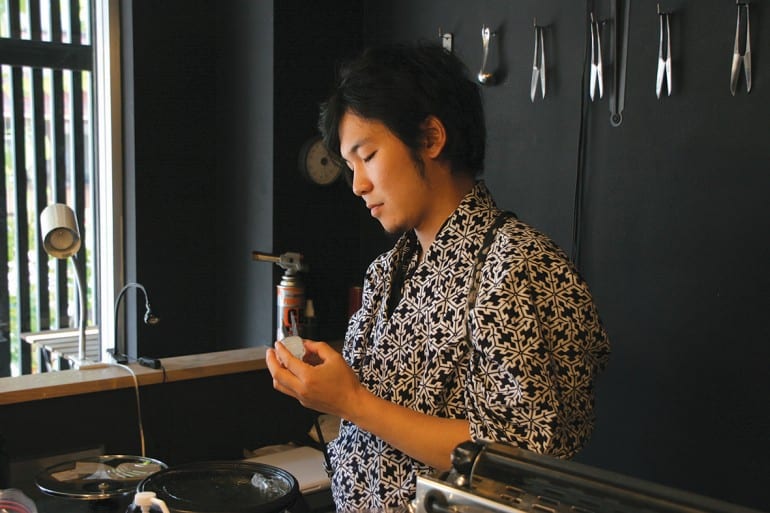
The Perfect Souvenir
Our customers run the gamut; from children to older folk who usually buy it as a gift for loved ones, or to celebrate special occasions such as birthdays or weddings. We try to keep things fresh and interesting by also moulding candy into forms such as cup noodles as novelty items for our corporate clients. Our store is located near Asakusa, a heritage area in Tokyo that’s deeply connected to the Edo period, and where many craftsmen currently sell their work.
Beauty In Fragility
I’m often asked how I feel about creating something so ephemeral. However, the idea that there is beauty in impermanence and fragility is one that echoes in many other aspects of Japanese culture, such as the Japanese tea ceremony.
Do I think it’s important to ensure that the art of amezaiku doesn’t die out? Of course; that’s the reason why I now hold workshops and courses for other young people to learn the art. But I think the best way to make sure that amezaiku stays relevant for a long time to come is to continually evolve, such as by using social media to promote amezaiku. I enjoy the challenge of always having to think of new ideas and designs.
(Text Denise Li)
Find out more about Ameshin at
http://www.ame-shin.com/en

